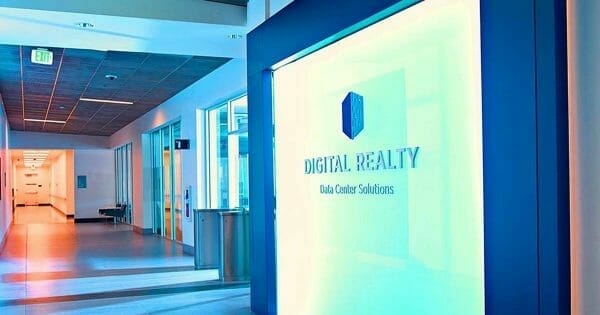Digital Realty (DLR.NYSE), a provider of data center and colocation solutions, has been awarded the National Association of Real Estate Investment Trusts “Leader in the Light” award for data center sustainability for the third consecutive year.
The award recognizes companies that have produced superior, quantifiable results from the implementation of sustainable business practices. The bandwagon for sustainable companies is full, and it’s almost a pointless category nowadays—little more than marketing buzz. But it’s hard for any well-meaning rational person to deny the science behind climate change, even though there are definitely idiots out there who persist.
“We have more than doubled our renewable energy sourcing over the past few years, with the goal of bringing our customers into purpose-built, sustainable data center facilities. Our long-term goal is to power our global portfolio with 100% renewable energy. We work with our customers, suppliers and employees to scale our sustainability initiatives to enhance efficiency and improve the environmental performance of the data center industry,” said Aaron Binkley, senior director of sustainability for Digital Realty.
Here’s my suspicion and forgive me if I’m wrong, but most people involved in finance give absolutely zero shits about the environment. They’ll pay lip service to the climate-change orthodoxy to avoid the negative backlash, but when it comes to actually making sacrifices to their bottom line for the sake of the environment, they’ll do what they need to do to maximize their profits.
Cash is always going to be king and profits are always going to be the primary driver for any company, but maybe these types of incentives—awards, rewards, and incentives—towards behaving in an sustainable, ethical fashion should be recognized more than they are. Especially if they can jack their revenue stream at the same time.
We wrote about the company earlier this month, detailing their merger with Interxion (INXN.NYSE).
Digital Realty Trust, Inc. is a real estate investment trust that invests in carrier-neutral data centers and provides colocation and peering services. Digital Realty makes its money by supporting the data center, colocation and interconnection strategies of its customers throughout the Americas, Europe, middle-east and Africa, and Asia Pacific regions respectively, offering cloud and information technology services, as well as communications and social networking and financial services.
The companies largest operating areas are:
- Northern Virginia
- Dallas
- Chicago
- New York State
- Silicon Valley
- London
Now let’s consider Digital Realty for a moment.
In 2018, Digital Realty added 104 megawatts of renewable energy contracts across its U.S. portfolio, bringing the total executed under long-term contracts to 288 megawatts of renewable energy. Last year, the company’s renewable energy efforts resulted in 533,900 metric tons of avoided carbon emissions, the equivalent of taking 113,000 cars off the road each year, or the electricity needs of more than 93,000 homes per year. In 2019, the company announced an additional 50 megawatts of renewables to support its data centers in Ashburn, Virginia, and signed a green tariff agreement with Portland General Electric (PGE) which will supply approximately 120,000 megawatt-hours annually to Digital Realty’s data center development project in Hillsboro, Oregon.
That’s a fair amount of expansion with a good amount of business, and a concentrated effort to do as little harm as possible.
The link between sustainability and reliable energy
According to the Uptime Institute, one third of data centers experienced an outage in 2018. A third of those were due to power. This costs a colocation center roughly $250K every time it happens.
The solution to this problem is microgrids, and yes, Digital Realty uses them.
“These systems effectively reduce a data center’s carbon footprint by utilizing one or more local, greener, and renewable energy sources such as solar, natural gas, microturbines, batteries, and hydrogen fuel cells. Microgrids take the energy generated by these distributed energy resources (DERs) and either add it to the conventional grid or, when disconnected, known as ‘islanding,’ use it to support the loads separately,” said Andy Haun, chief technology officer at Schneider Electric.
Think of them as a backup generator that uses renewable energy sources. So if there were to be too much of a load on existing hydroelectric stores, for example, the energy draw would be diverted to energy stored from renewable sources, ensuring that there’s no revenue losses from power outages.
Revenues aren’t lost and the environment isn’t further compromised.
Sounds like a win win to me.
—Joseph Morton



